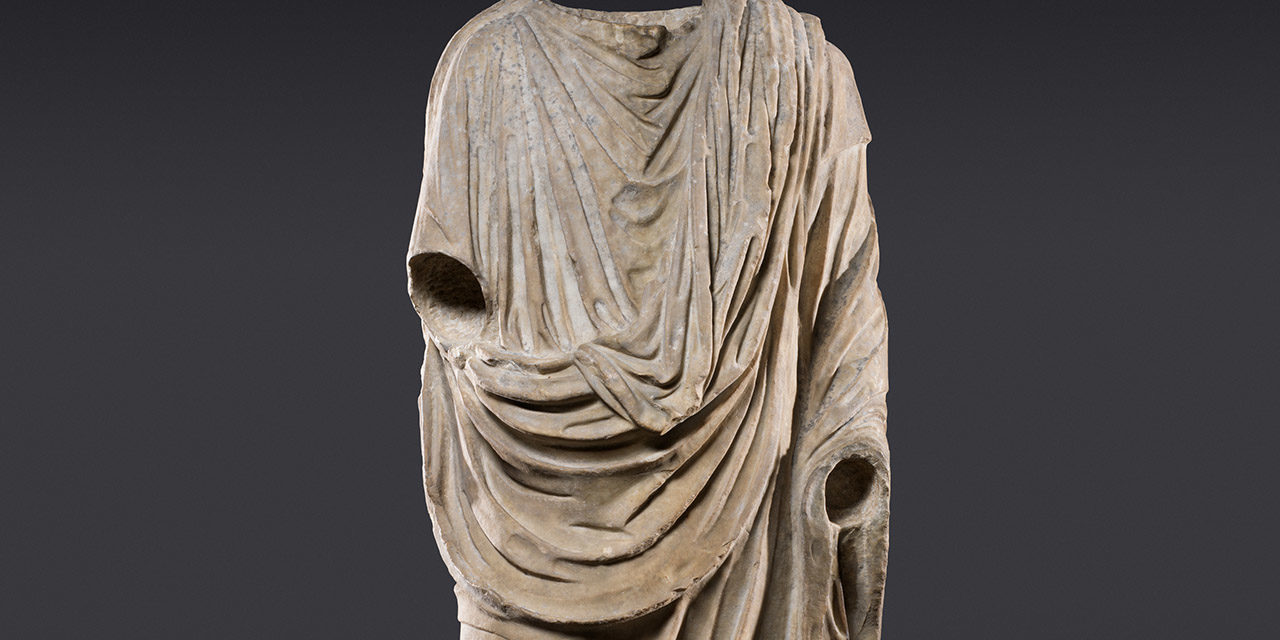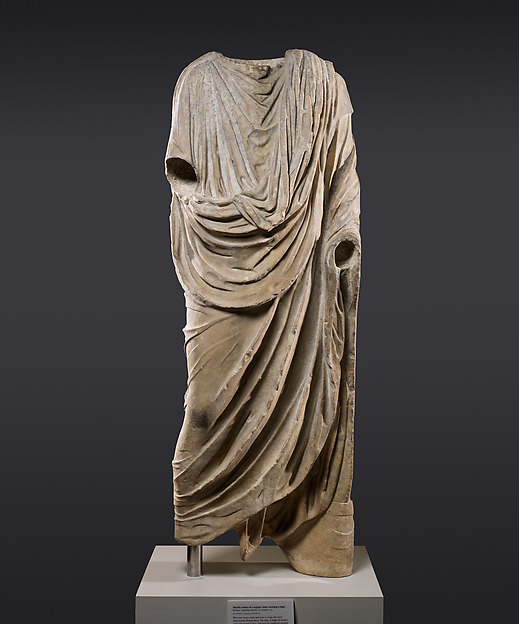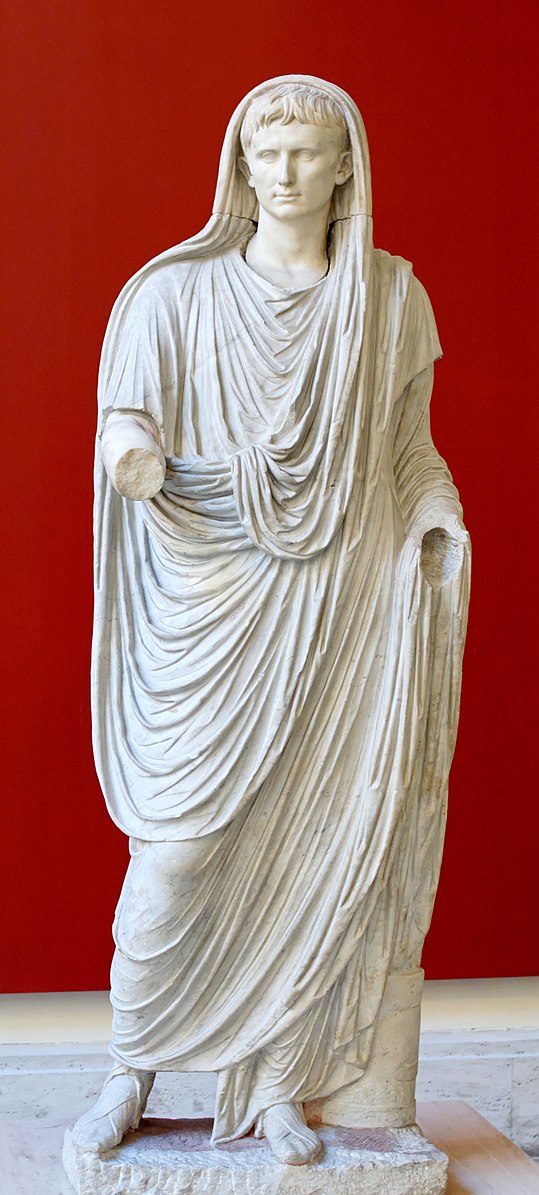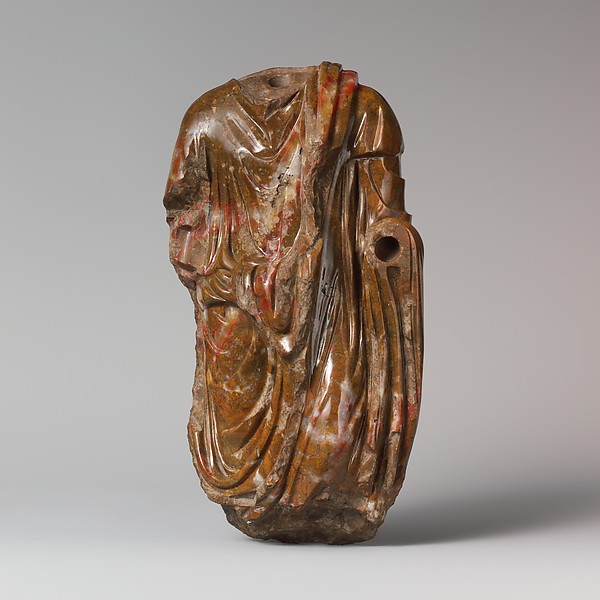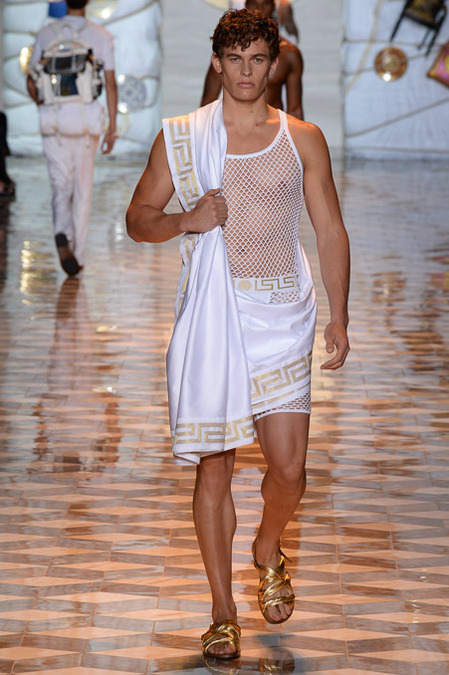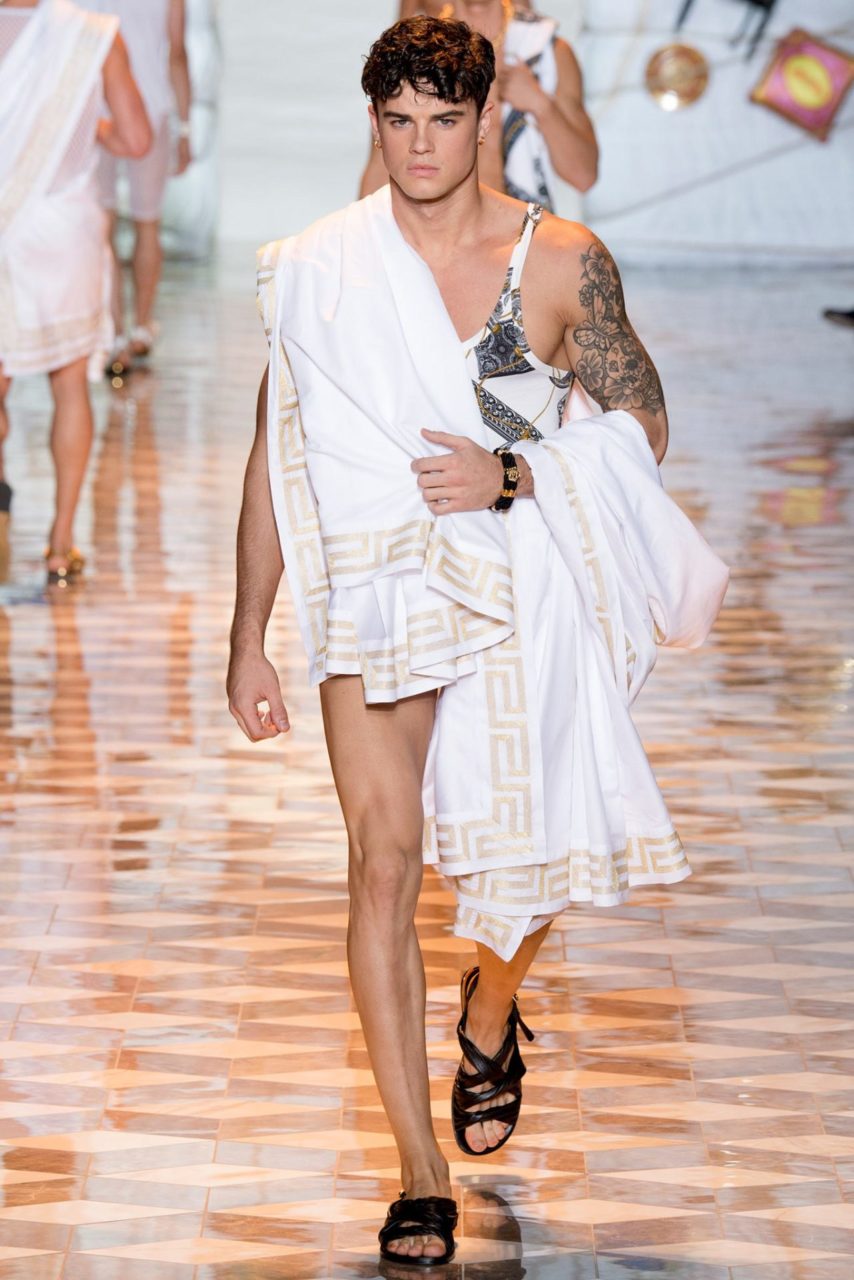The large draped garment of white, undyed cloth worn by Roman men as a sign of citizenship.
The Details
According to the Berg Companion to Fashion, the toga was: “The Roman citizen’s formal garment worn over the tunic and arranged in folds around the body and across the shoulders.”
Daniel Delis Hill’s History of World Costume and Fashion (2011) defines the toga as: “The primary outer garment of male Roman citizens that was arranged according to a strict protocol of drapery” (114).
According to R. Turner Wilcox’s The Dictionary of Costume (1969):
“During the first three centuries of our era, the Roman toga was the principal garment of both sexes but later was worn only by men. Its use was the same as the Greek himation but it was very different in shape. The Greek wrap was a rectangle and the Roman, when folded, a semi-circle. The wearing of the toga became an art with its hanging folds became an art with its hanging folds weighted by pellets and each fold named. The toga was the cloak of peace as the sagum was that of war.” (345)
Mechthild Müller’s Early History of Dress and Fashion in Continental West Europe more fully describes Roman dress, writing:
“Typical Roman dress in West Europe following the expansion of the Roman Empire included a tunic, a toga for Roman citizens, and shoes. Leg coverings and underwear were worn but are seldom mentioned. The official tunic had no sleeves. The form of the toga was like a semicircle, and its large version had a length of six ells (about 45 inches or 1.14 meters). Many statues exist on which one can see how a toga was worn, but very few descriptions remain. Quintilian wrote the most detailed one (between 60 and 70 c.e.), describing dress for a speaker (rhetor). According to him, the correct length of the toga was the same as that for the sleeveless tunic. A rhetor had to gird his tunic so that the front fell below the knee and the back to the middle of the knee joint.”
The Dictionary of Fashion History defines a toga as:
“A wrapped outer garment worn in ancient Rome. Its origin is probably to be found in the tebenna, a semicircular mantle worn by the Etruscan, a people who lived on the Italian peninsula in an area close to that occupied by the Romans.”
Fig. 1 - Artist unknown (Roman). Marble statue of a togatus (man wearing a toga), 1st Century AD. Marble; 182.9 cm (72 in). New York: The Metropolitan Museum of Art, 04.15. Gift of John D. Crimmins, 1904. Source: The Met
Fig. 2 - Artist unknown. Augustus as Pontifex Maximus, ca. 90-100 AD. Greek marble and italic marble. Rome: Museo nazionale romano di Palazzo Massimo, Inv. 56230. Source: Wikimedia
Fig. 3 - Artist unknown (Roman). Jasper statuette of a man wearing a toga, 1st century AD. Jasper; 18.7 cm (7 3/8 in). New York: The Metropolitan Museum of Art, 17.230.54. Rogers Fund, 1917. Source: The Met
References:
- Cumming, Valerie, C. W. Cunnington, and P. E. Cunnington. “Toga.” In The Dictionary of Fashion History, 206. Oxford: Berg Publishers, 2010. Accessed January 07, 2018. https://www.bloomsburyfashioncentral.com/products/berg-fashion-library/dictionary/the-dictionary-of-fashion-history/toga.
- Hill, Daniel Delis. History of World Costume and Fashion. Upper Saddle River, NJ: Pearson Prentice Hall, 2011. http://www.worldcat.org/oclc/731445106
- Müller, Mechthild. “Early History of Dress and Fashion in Continental West Europe.” In Berg Encyclopedia of World Dress and Fashion: West Europe, edited by Lise Skov, 47–56. Oxford: Berg, 2010. Accessed January 07, 2018. http://dx.doi.org/10.2752/BEWDF/EDch8010a.
- Tortora, Phyllis. “Toga.” In The Berg Companion to Fashion, edited by Valerie Steele. Oxford: Bloomsbury Academic, 2010. Accessed September 22, 2017. https://www.bloomsburyfashioncentral.com/products/berg-fashion-library/encyclopedia/the-berg-companion-to-fashion/toga.
- Wilcox, R. Turner. The Dictionary of Costume. 1st Macmillan Hudson River ed. New York: Macmillan, 1987. http://www.worldcat.org/oclc/456762613

